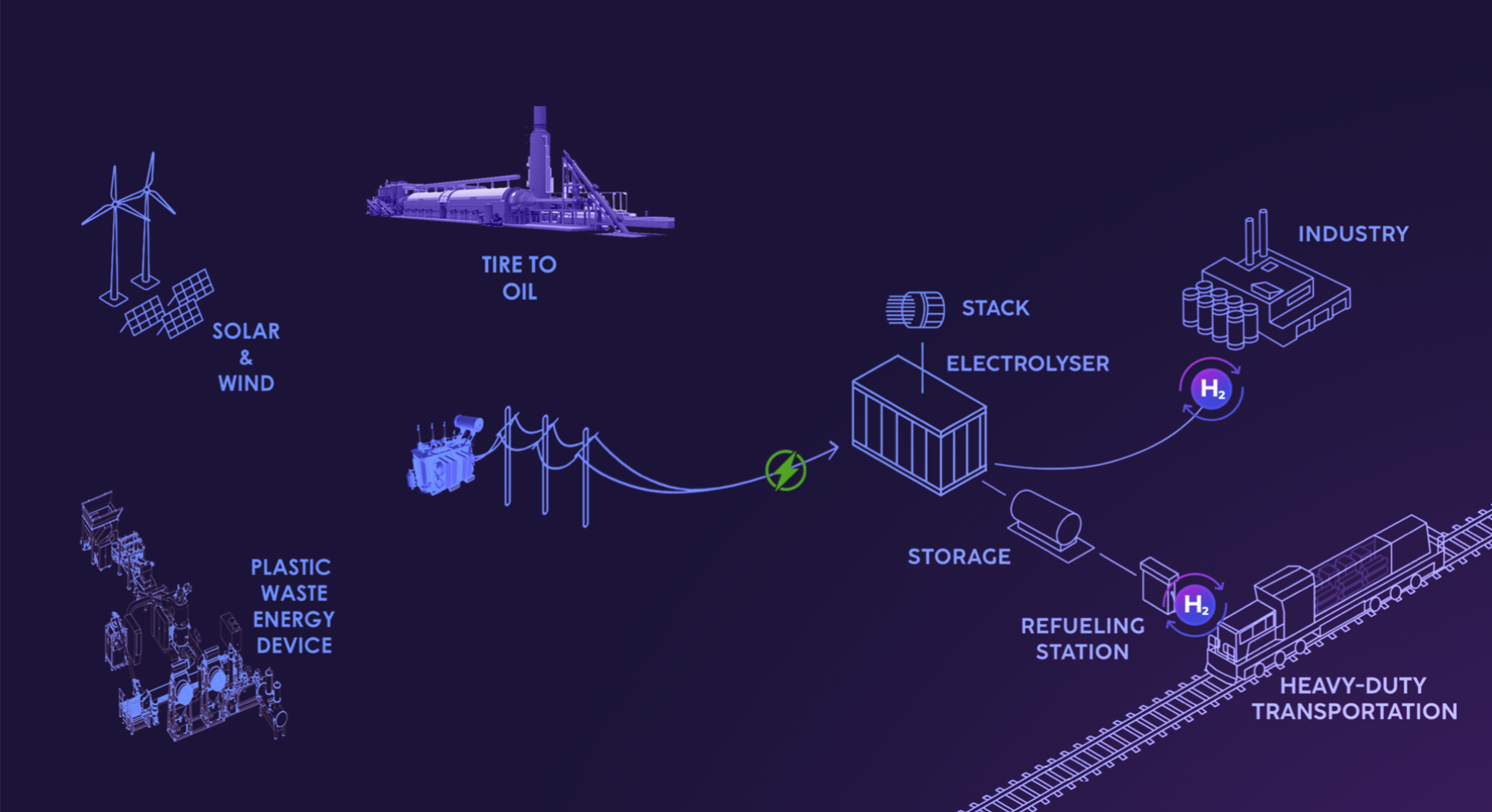Battery storage for self starting
Energy from the battery storage is used to start the operation of the PWED plant. After approx. 1 hour of operation, the PWED system begins to produce enough energy for independent operation, and the consumed energy from the battery storage is replenished for the next start-up.

Entrance of the raw material
The incoming waste unsorted plastic material is chopped in a shredder and falls on a moving belt that carries it to the melting part of the company EREMA. The chopped material passes under a simple section to separate the parts that are magnetic. More complex material that has non-magnetic parts needs to be additionally processed on specific equipment before entering the PWED.
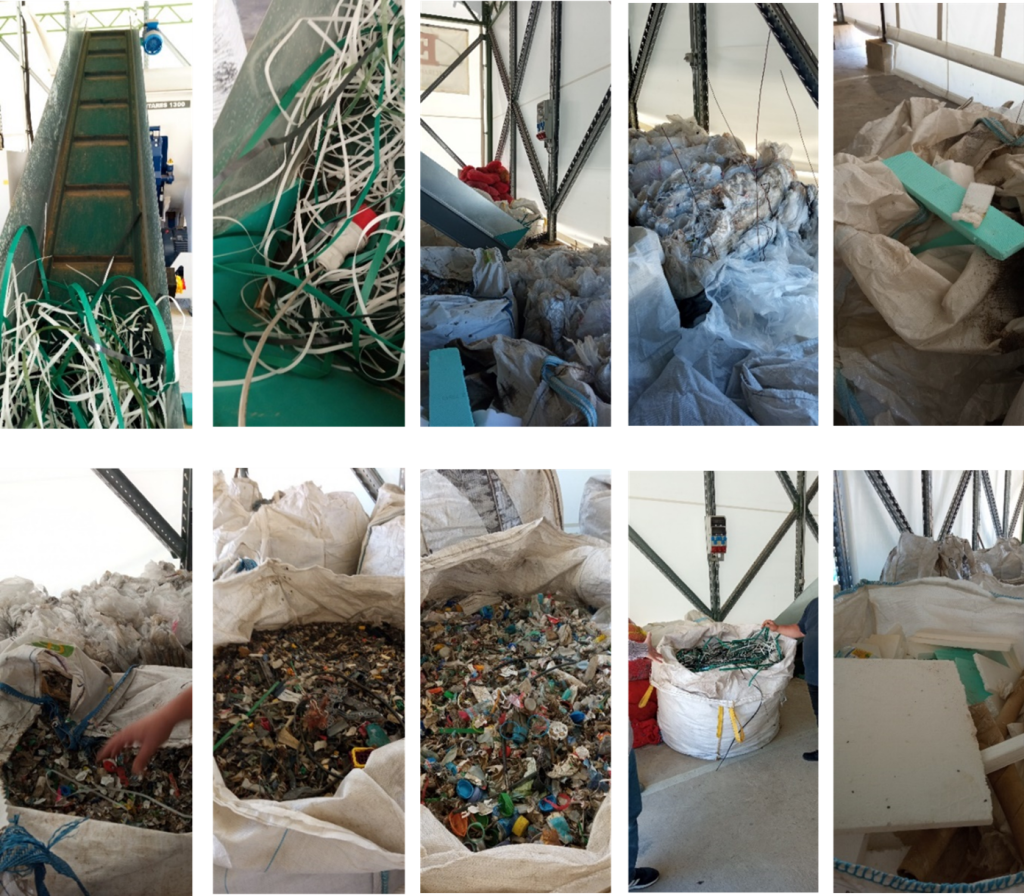
Melting in the EREMA section
The incoming waste unsorted plastic material is chopped in a shredder and falls on a moving belt that carries it to the melting part of the company EREMA. The chopped material passes under a simple section to separate the parts that are magnetic. More complex material that has non-magnetic parts needs to be additionally processed on specific equipment before entering the PWED.
Before the melting process in the EREMA section, the incoming material is swirled and in this process any moisture, which can be up to 15%, is dried.
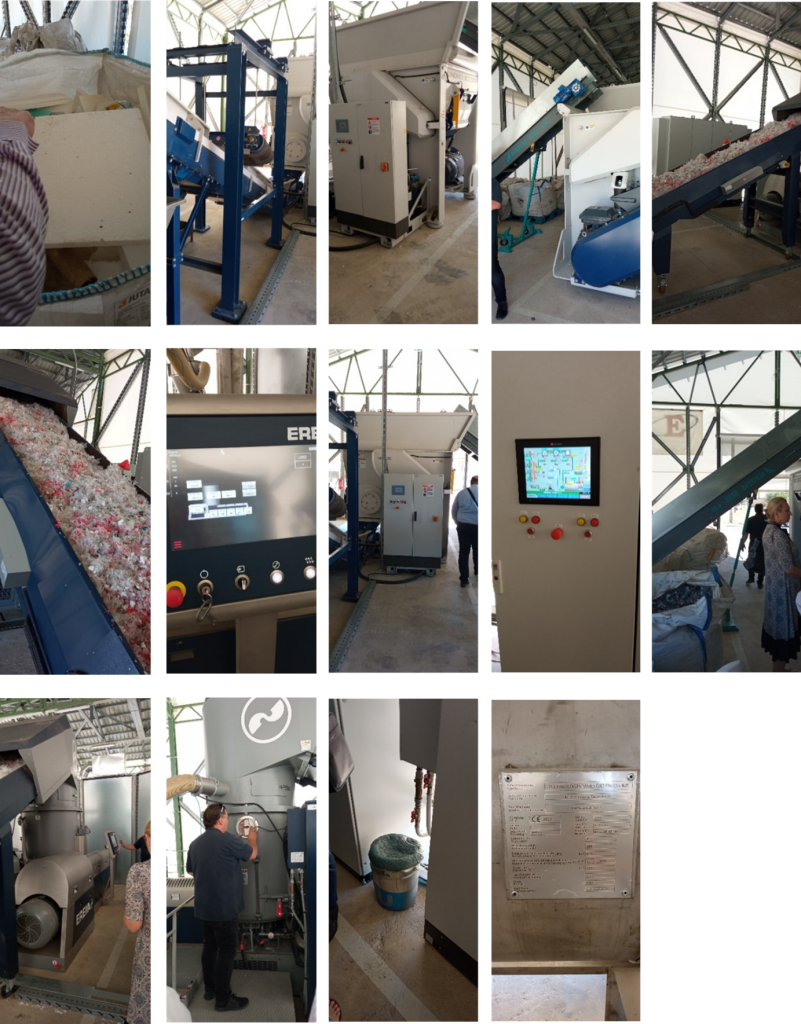
Carbonization of impurities
Impurities from waste plastic, such as food and drink residues, pieces of wood, pieces of fabric and the like, are carbonized into dry and fine coke granules during melting in the EREMA waste plastic recycling section.
All impurities that cannot be carbonized or melted, such as pebbles and sand as well as larger metals, which are tried to be processed with the PWED plant outside of the regulations, are separated in the ash chamber of the EREMA smelter.
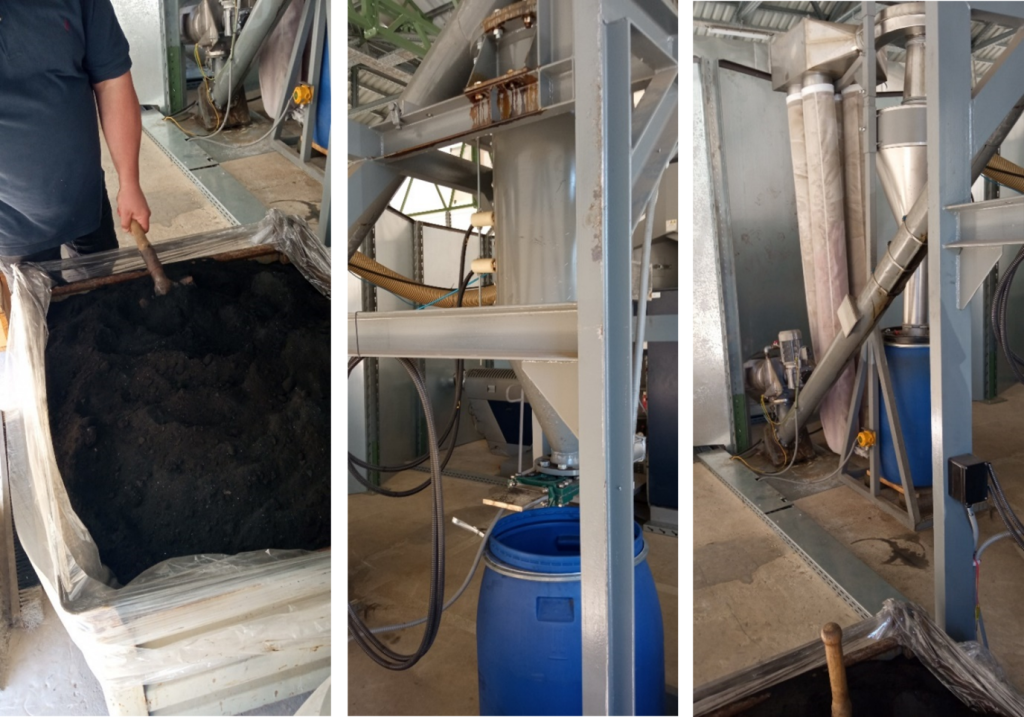
Depolymerization reactor
The depolymerization process of the molten input raw material takes place in the depolymerization chamber under low pressure and at a temperature of up to 600° C. The turbine that applies the molten input raw material to the shell of the depolymerization chamber rotates at low speed and is changed every 5 years. A replacement depolymerization turbine is also supplied with the PWED plant. The replaced depolymerization turbine is being repaired and is being prepared for the next replacement.
The molten layer of the input raw material evaporates into a mixture of hydrocarbon gases and enters the process of condensation of diesel and gas fractions.

Condensation of hydrocarbon gases
The molten input raw material depolymerized into a mixture of hydrocarbon gases, in the depolymerization part, is condensed into three fractions of diesel fuel and one fraction of gas.
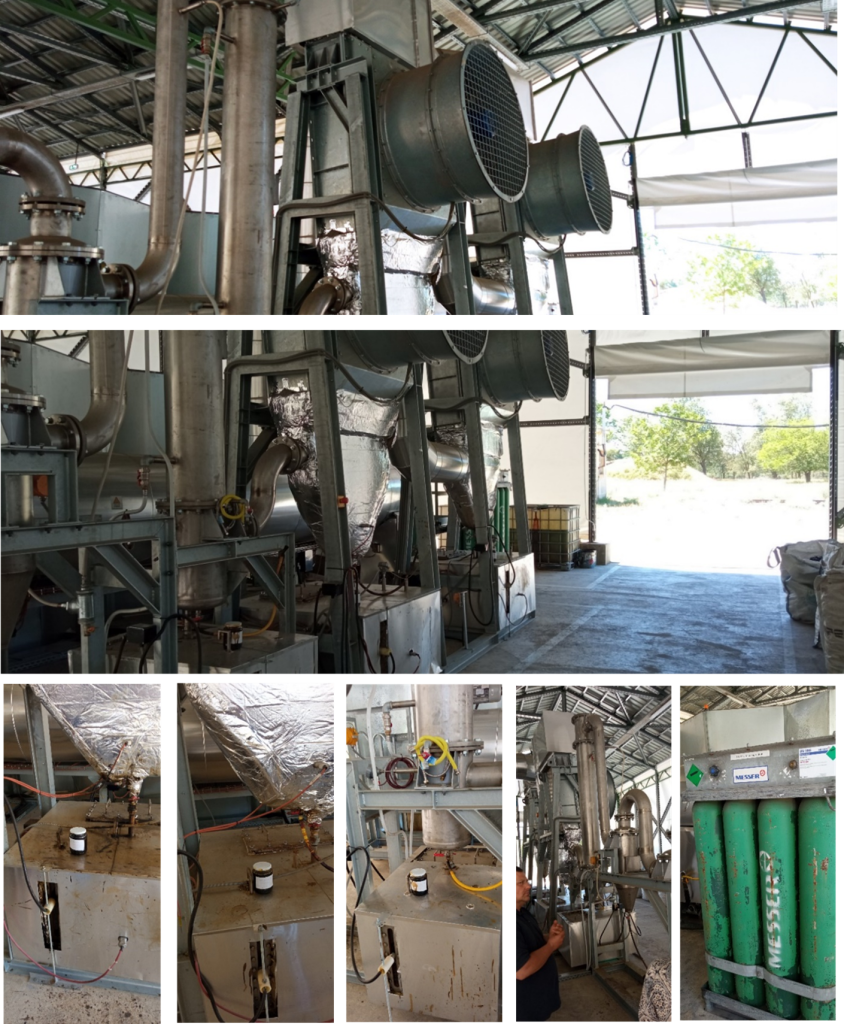
Turbine/Generator
Turbine/Generator produces 2 MW/h of electricity and 2 MW/h of heat energy per hour.
From this electricity, 250 kW/h per hour, is used to run two shredders, two EREMA sections for melting the shredded input plastic, two sections for carbonizing impurities, two sections for depolymerizing melted plastic and two sections for condensing hydrocarbon vapors from the depolymerizer. The net electricity remaining for consumption (for direct consumption or for hydrogen production or for release into the grid or for release into EV chargers or for release into chargers for electric vessels or for charging BESS battery storages) is 1,750 kWh/h.
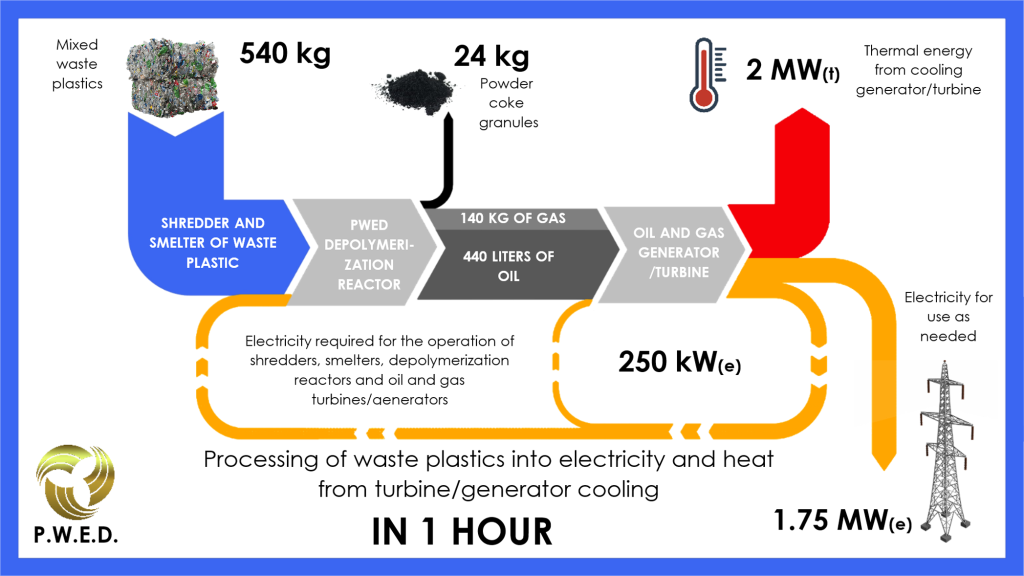
The turbine/generator is made in a compact, simple and robust way and packed in two 20-fit containers. Its specialty is that it works on two fuels (diesel and gas) at the same time, and it is adapted to the specific characteristics of these fuels produced from renewable or waste sources.
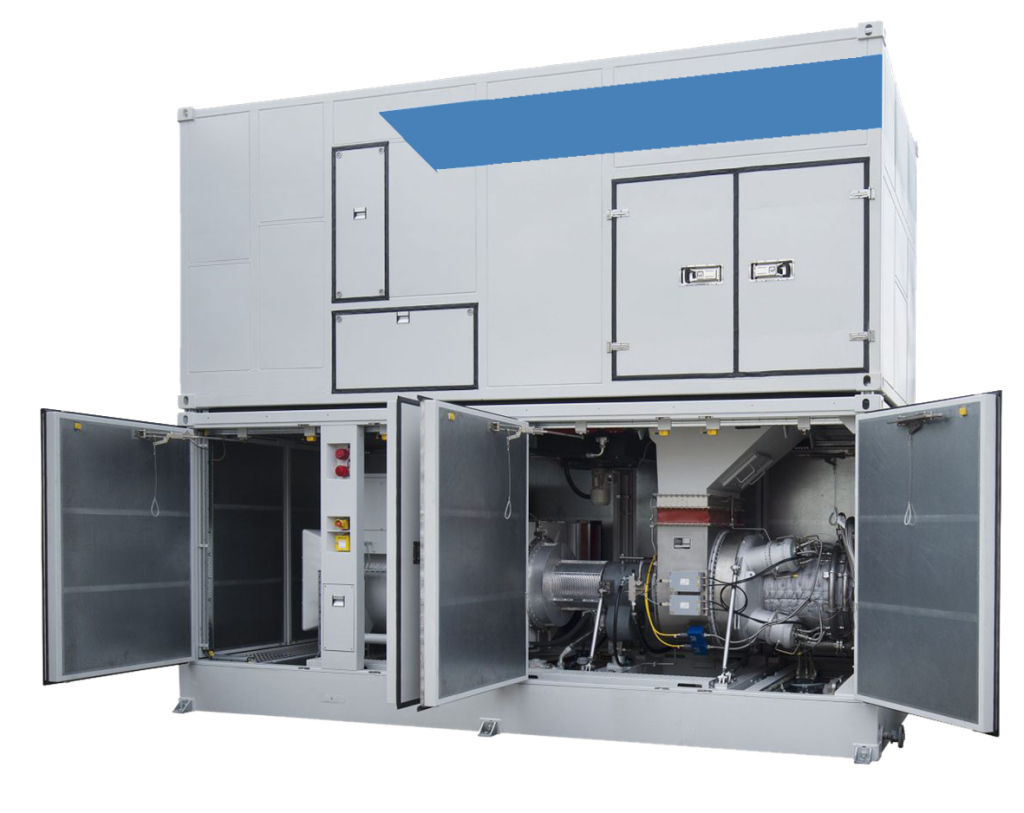
The image of the turbine/generator, nor their performances, does not necessarily correspond to the turbine/generator supplied with the PWED device. This is because we continuously work on finding the best solutions for the end customer.
Control Room
The control room is a 20-foot container that houses a large control screen that displays plant operating parameters. Management and monitoring of all parts of the plant, through the SCADA interface, are visually displayed and programmable from the control room.
The control interface on the screen is in English and can be localized to the required language if necessary.

